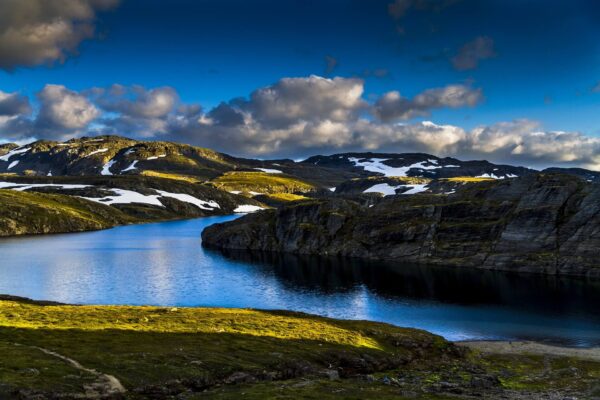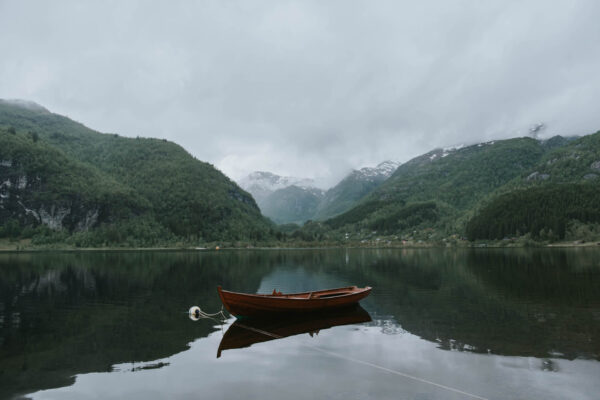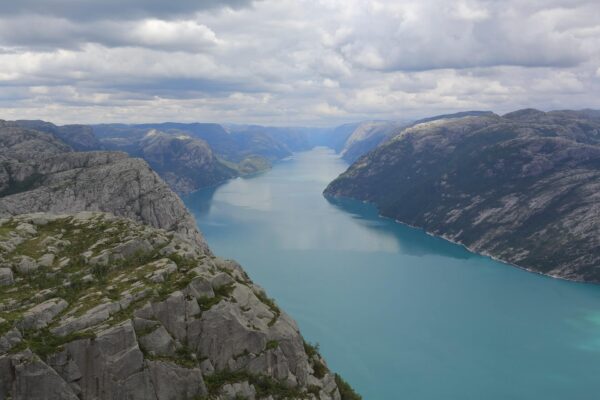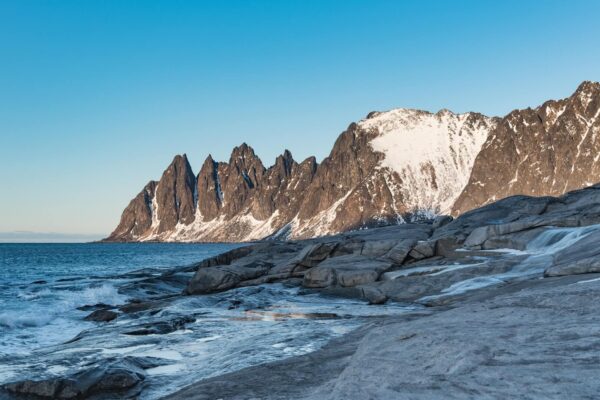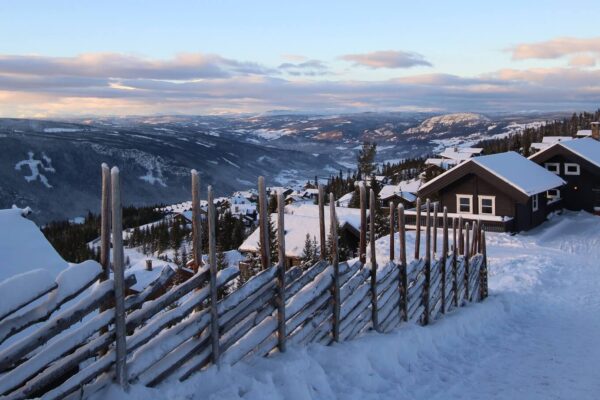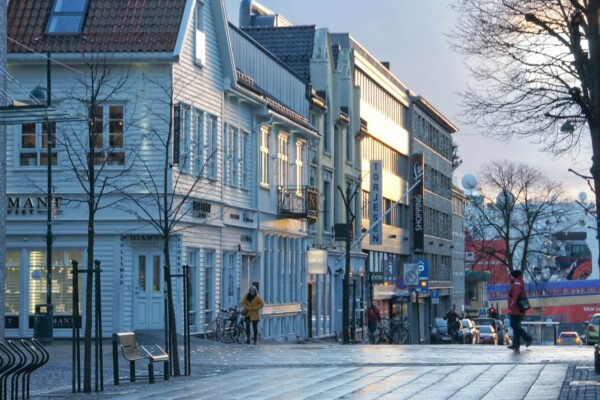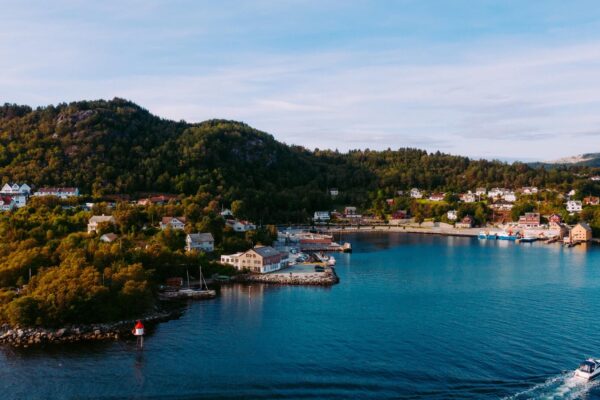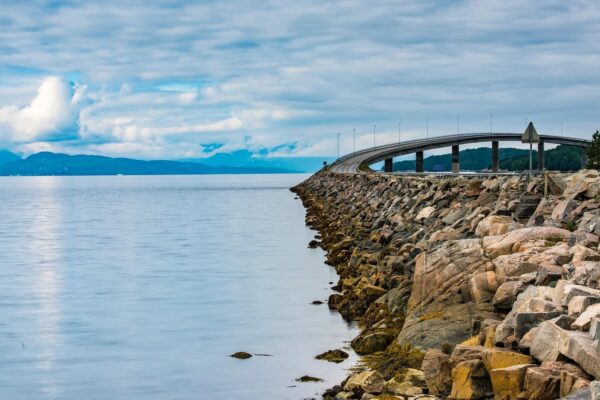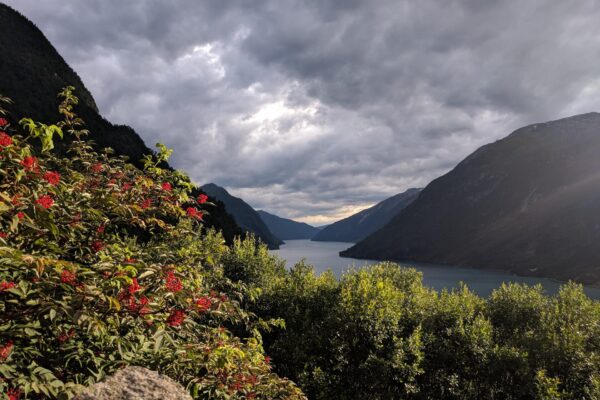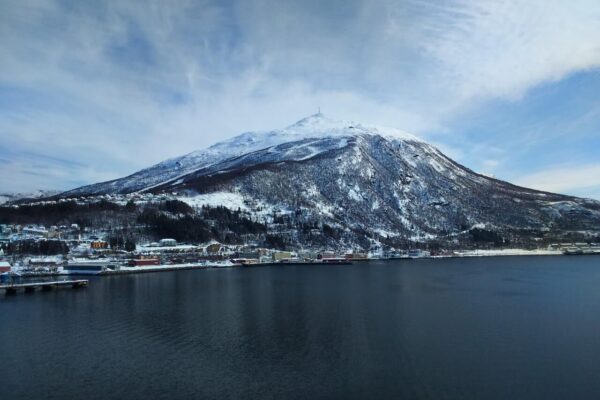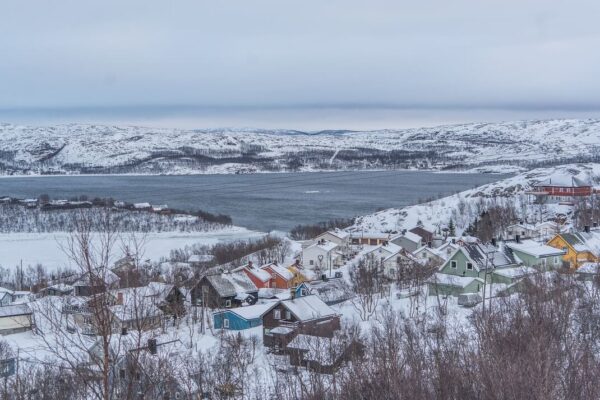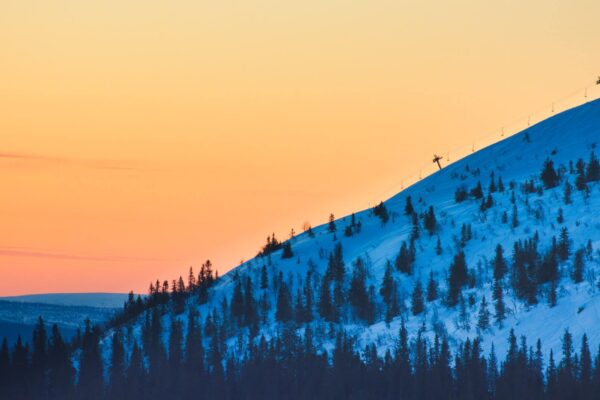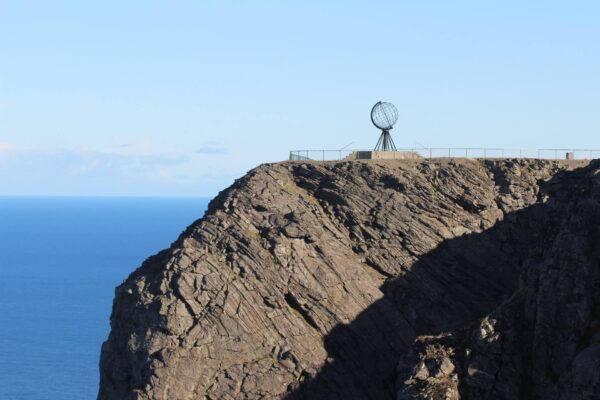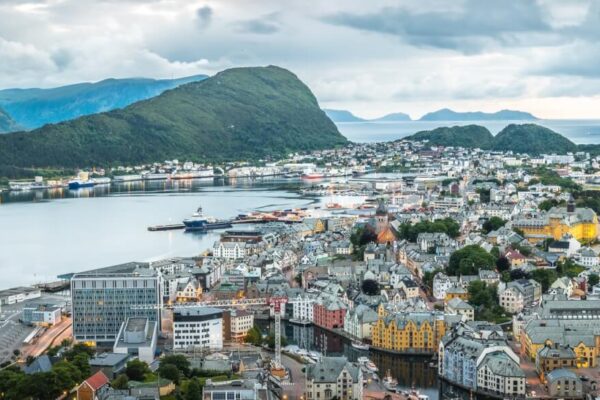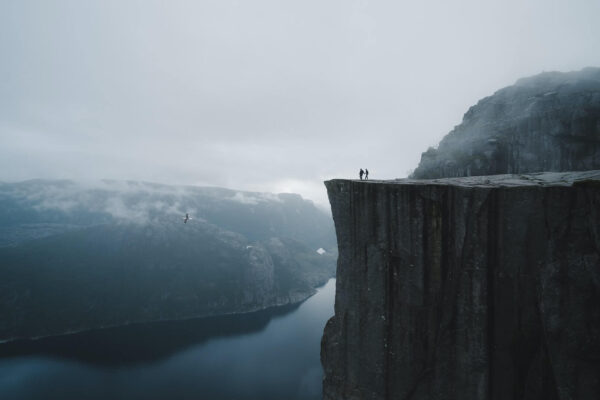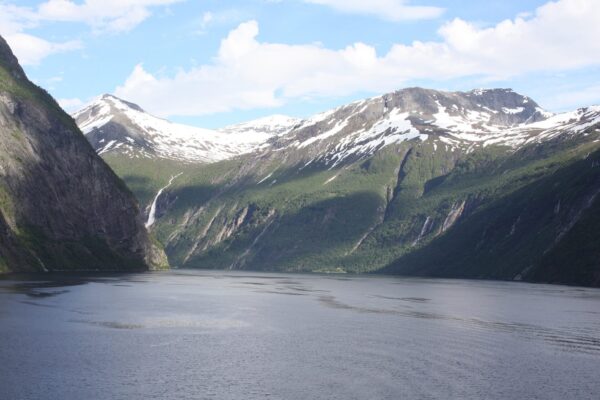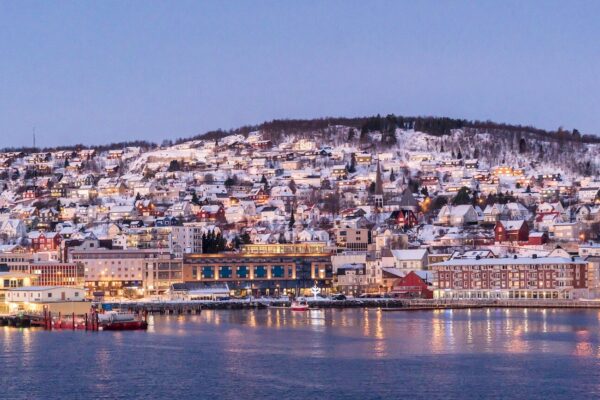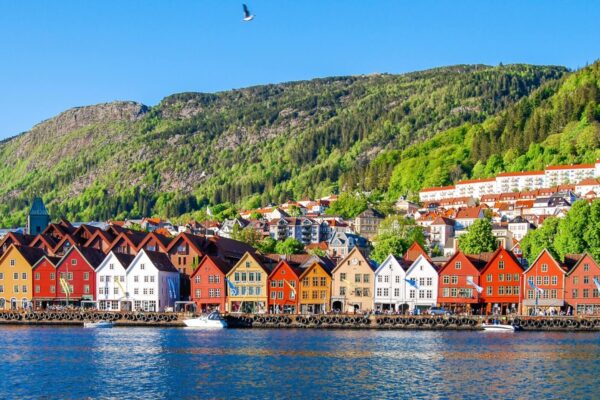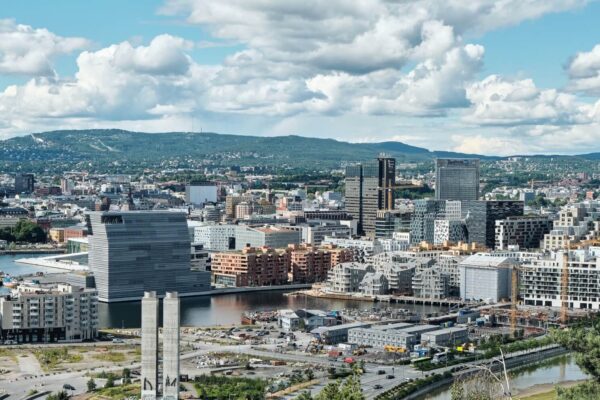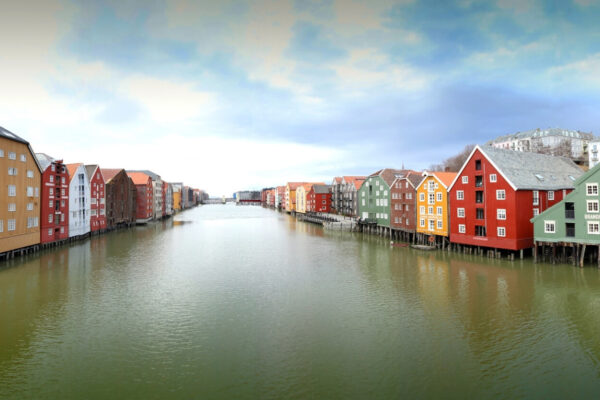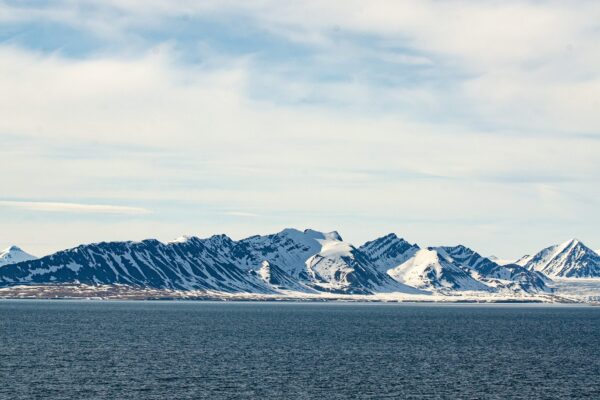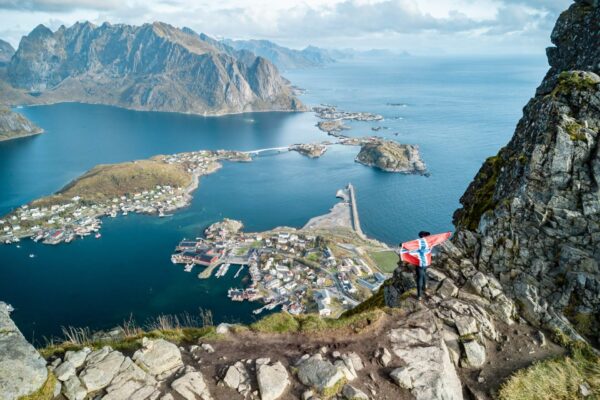High up in the north of Norway, where the midnight sun and darkness reign, is the harbour town of Hammerfest. Here you can get to know the traditional Sami culture or discover the country’s impressive nature. The town’s name also refers to this: “Hammer” means “steep mountainside” and “fest” refers to the “mooring” (of boats).
The town and municipality of Hammerfest is located on the island of Kvaløy in the Troms and Finnmark region. Until 1998, Hammerfest was considered the northernmost city in the world, but still advertises itself as the “northernmost city in Europe”. The small towns of Honningsvåg and Longyearbyen on Spitsbergen are even further north. Hammerfest is named after an old jetty.
| Inhabitants | 11,330 |
|---|---|
| Area | 2,692,57 km² |
| Province | Troms og Finnmark |
Where is Hammerfest located?
Hammerfest is located in the far north of Norway on the coast of the island Kvaløy – more precisely: 70.7° north latitude and therefore on the same latitude as the northernmost parts of Siberia and Alaska. For this reason, the city calls itself “the northernmost city in Europe”. However, how the term “city” is defined is disputed. If you go by the number of inhabitants, there are other small towns above Hammerfest.
The municipality of Hammerfest also includes parts of the islands of Seiland, Sørøya and Melkøya. Incidentally, it is 207 kilometres from Hammerfest, just over three hours by car, to the North Cape, the northernmost point in Europe. Many tourists pass through Hammerfest on their way to the North Cape on Hurtigruten ships.
Fun fact: In 2019, a beluga whale sighted off Hammerfest caused a stir. It was discovered by fishermen. The trusting animal was wearing a belt with a holder that read “St. Petersburg equipment”. To this day, there is speculation that the Russian navy trained the whale for espionage purposes. However, this has never been conclusively proven. Following a public vote, the beluga was given the name Hvaldimir – a combination of “hval”, the Norwegian word for whale, and Vladimir Putin.
Hammerfest: sights and activities
Hammerfest Church
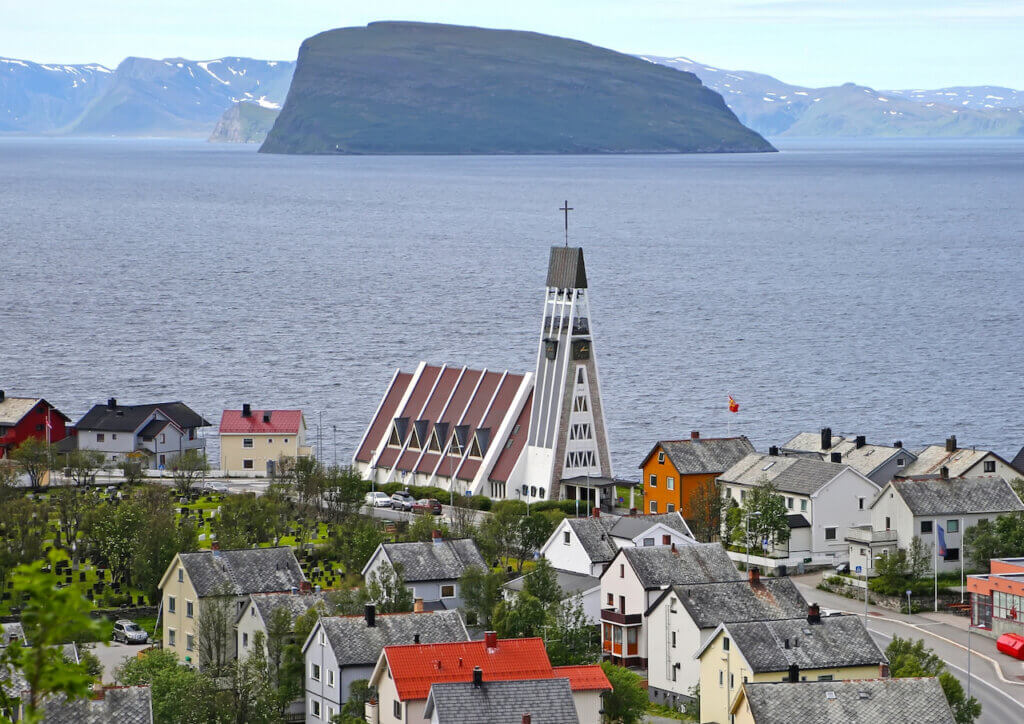
Hammerfest church stands right on the shore against an impressive mountain backdrop. The modern triangular building dates back to 1961, and inside the Evangelical Lutheran church there is an impressive glass mosaic behind the altar, which fills the pointed shape of the church roof. The triangle was chosen as a shape to symbolise the Holy Trinity and is also reminiscent of the traditional fish drying racks that are still used to make stockfish today.
Opposite the church, on the other side of the road, are the cemetery and the burial chapel. This was built in 1937 and is the only building in Hammerfest to have survived the Second World War. It is the oldest building in the town.
Salen viewpoint
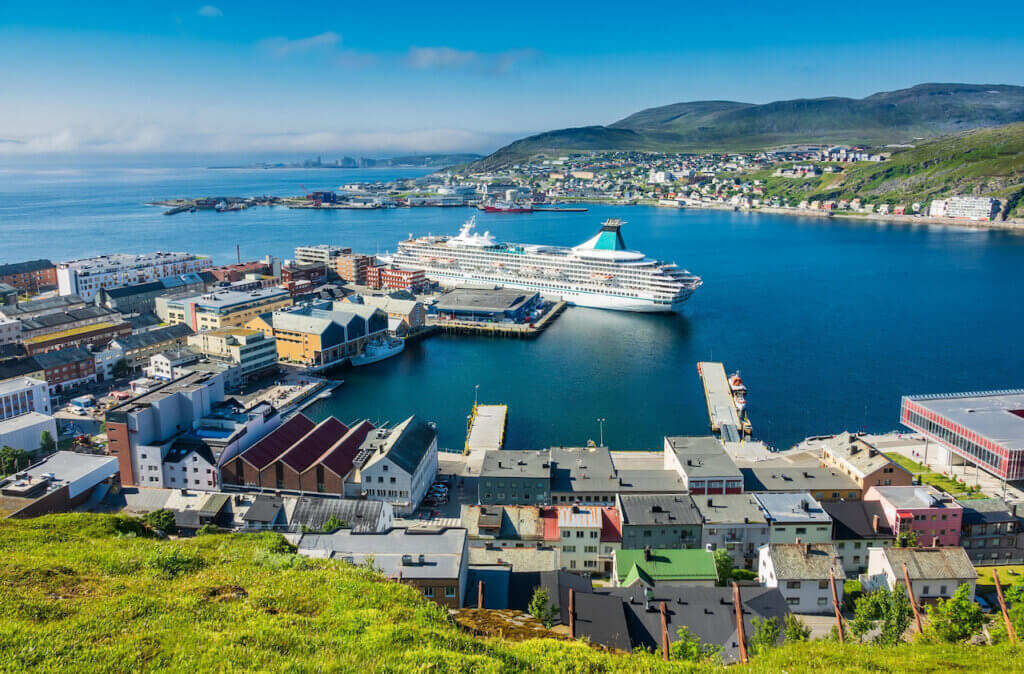
80 metres above the city at the Salen (“saddle” in English) viewpoint, you have an impressive panoramic view over Hammerfest. From here you can watch the hustle and bustle in the city centre and the harbour.
To get there, you can either take the car or bus or walk up the Sikksakkveien (“zig-zag path”). It takes around 20 to 30 minutes to reach the top on foot. However, you should take care in winter as the route can be icy.
Struve Arch
The Struve Arc, also known as the Scandinavian-Russian Meridian Arc, consists of a network of survey points over 2800 kilometres long and is a UNESCO World Cultural and Natural Heritage Site. The survey route runs through Norway, Finland, Sweden, Russia, Estonia, Latvia, Lithuania, Belarus, Ukraine and Moldova. The most famous of the 265 survey points is located in the Hammerfest suburb of Fuglenes and is marked by a meridian column.
Restaurant Mikkelgammen
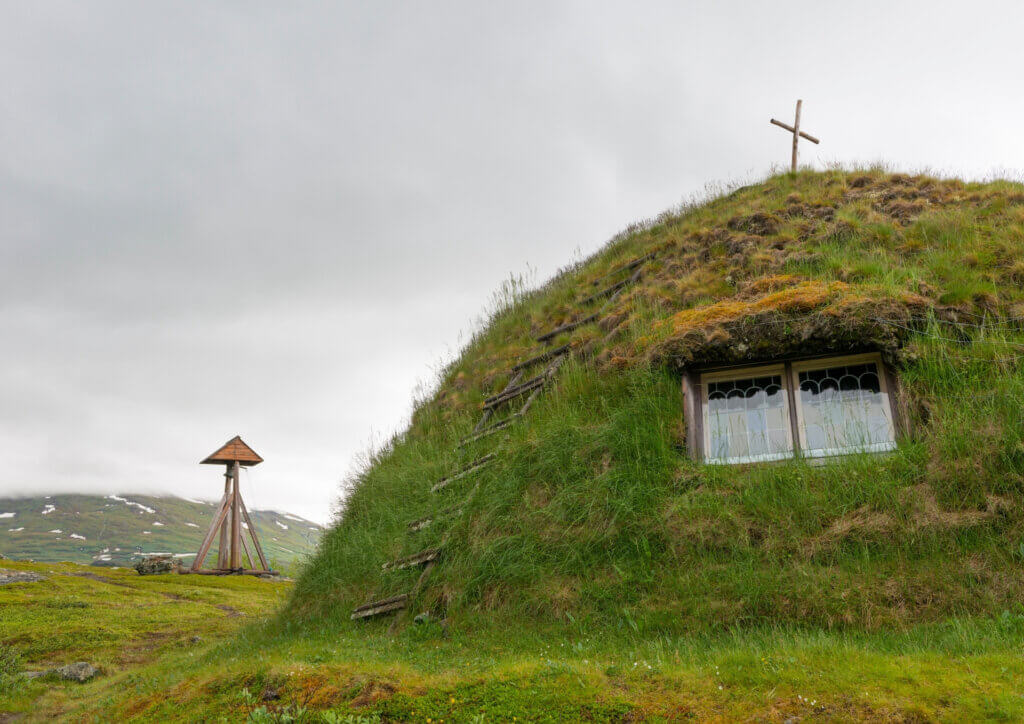
It is not actually a traditional restaurant, but an experience centred around the history and culture of the Sami people. Mikkelgammen (translated as “Michael’s hut”) is run by the two Sami Mikkel and Solveig.
Traditional Sami dishes, such as reindeer meat and cloudberries, are prepared and served in the typical Sami house made of wood and earth. The owners also tell you all about Sami culture and their life as traditional reindeer herders. The guests sit in a circle around a fire. In the low season, the restaurant can only be booked for groups of 10 people or more and should be booked in advance.
Reconstruction Museum
The Museum of Reconstruction (Gjenreisningsmuseet) tells the story of the town of Hammerfest and the surrounding provinces of Finnmark and Nord-Troms. During the Second World War, Hammerfest was a supply harbour for the German navy. When they withdrew in 1944/45, it was forcibly evacuated and almost completely burnt down and destroyed.
In addition to the dramatic events, the museum also focuses on the systematic rebuilding of the town. Photographs in the museum tower show the architectural phases of the region. Attached to the museum is the Museum of the History of Telecommunications in Norway. Among other things, the Hurtigruten mail ships play a role here.
Summer festivals
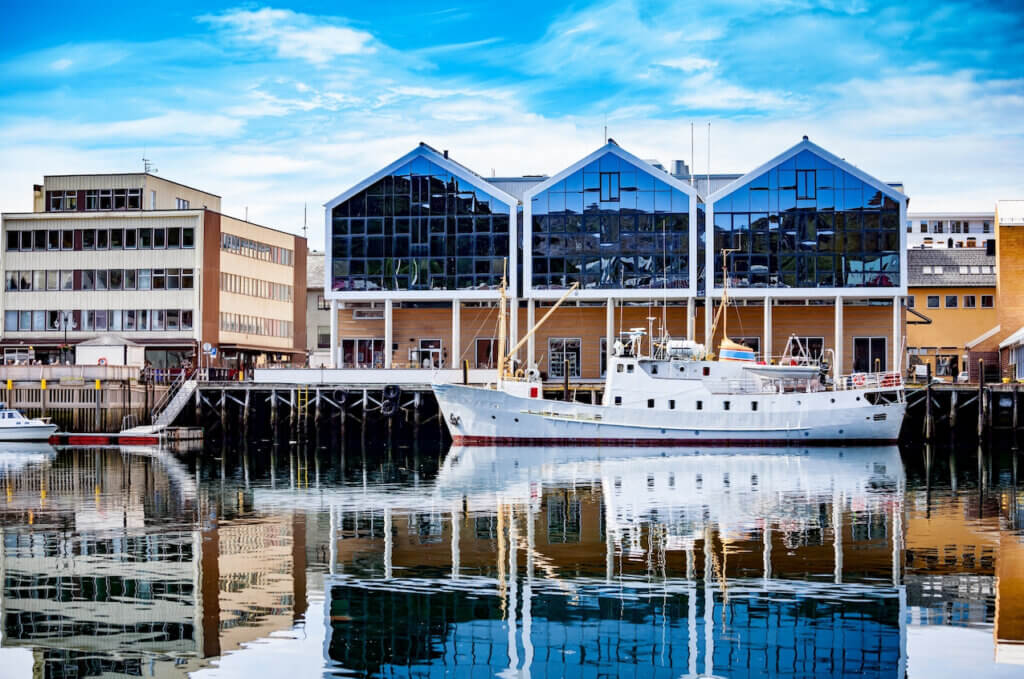
Numerous events take place in Hammerfest in the summer, such as the beer festival and music festivals. So if you take a trip to the far north in the summer, you can experience a lot of culture here. But that doesn’t mean that a trip in winter isn’t also worthwhile.
Getting here: cruises via Hammerfest
Hammerfest has its own small airport, but it is only served by small aeroplanes from Tromsø.
The easiest way to get to the far north is to take one of the Hurtigruten cruise ships, which dock in Hammerfest every day on their way along the Norwegian coast in both winter and summer. However, there are also many other cruises that travel via Hammerfest and include other countries in addition to Norway.
Accommodation in Hammerfest
Although the selection of hotels directly in Hammerfest is rather small, there are various other accommodations in the surrounding area. Recommendations include the Hotel Scandic Hammerfest, which offers a great view of the harbour and the strait of Sørøysund. The Smarthotel Hammer fest is located right in the city centre.
There is also a car park for motorhomes in the immediate vicinity of the Struve Arch meridian column, so if you’re on a roadtrip through the Norwegian north, you should definitely stop here!
Hammerfest: weather and sunset
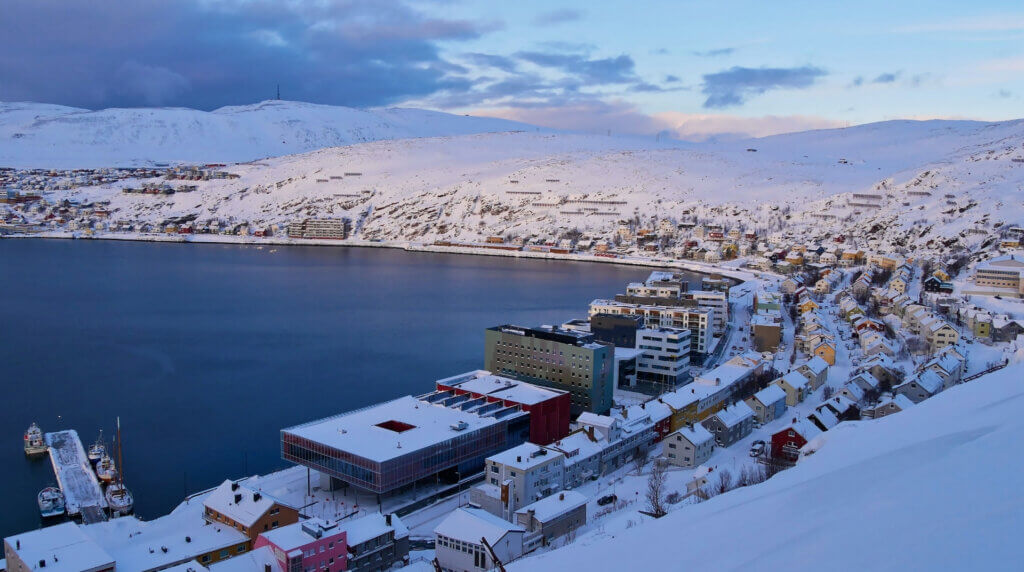
In winter, Hammerfest can experience heavy snowfall and icy temperatures down to -9°C (on average). Even in summer, the average maximum temperature is around 15 degrees.
Due to its location north of the Arctic Circle, the sun does not set in Hammerfest between 19 May and 26 July – the so-called midnight sun is in the sky. In winter, from 22 November to 21 January, there is no sunrise in Hammerfest. With a bit of luck, however, you can watch the spectacular Northern Lights at this time. Both natural spectacles attract many holidaymakers to Hammerfest.
Incidentally, Hammerfest was one of the first cities in Europe to introduce electric street lighting due to the darkness in winter.
